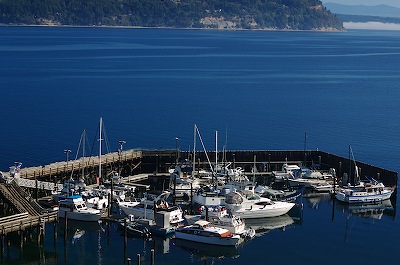Archive for the 'Old Site' Category
Migration from Manila
I’ve just completed the migration of one of my Manila sites to WordPress in an attempt to move from custom modified blog software that I have to host to something that will run on bog standard hosting accounts. Manila has worked well for me, but I’d really like to move the public facing services off of my ca. 2000 year old G4 that’s serving as the web host for wiredfool and other websites.
The site I converted was far simpler than this one — about 70 albums and maybe 100 posts, in addition to the 2700 pictures. Wiredfool one has about the same number of pictures, but more like 1000 posts and 7 years of experiments and Manila evolution.
I’ve been using my own picsPicker plugin for image galleries, so the first order of business was to find something that was similar enough that I could mechanically convert these galleries to the new format. It turns out that PHPSlideShow and the wordpress adaptation wordpress gallery were a very good fit for what I needed. With a bit of hacking and .htaccess magic, PHPSlideShow could be be made to have the same urls as my existing setup. I really like this, since it means that all the previous googlejuice is preserved.
PHPSlideShow uses a directory of images with a flat text file to provide ordering and captions, so given the original data, this was not that hard to create. A page of python and manilalib.py was enough to get the stories containing albums, pull out the message list, and then get the individual pictures’ url and description. This worked well for the other site, but wiredfool is old enough that three of the galleries failed due to the images not being downloadble via xml-rpc. Three galleries is enough to do by hand.
Once I was happy with the galleries, I had a choice of either just exporting the site to static html, or trying a conversion. I’m happy to say that the MvManila scripts got me 90% of the way there. They’re not perfect, and they’re not elegant, but it’s far faster than doing it all my self. Predictably, the biggest problem that I had were timeouts grabbing the shortcuts. I had to bump up the timeout and bypass apache so that the 35 minute rpc call worked. There was also one small issue of image tags with a picture$#### url getting dropped out, but that was solvable with a python regex and a url mapping list.
The scripts aren’t working as well with wiredfool due to a lot of xmlrpc issues. the specific errors are tables that should be addresses. So, I’m rewriting the data collection portions to run on the server. The elapsed time to write and run the shortcuts script was less than it took to run on the smaller site, so I’m doing something right. The pictures were similarly faster, and the posts should give me the chance to render the macros on the server.
4 commentsBread Experiences
The recent Thread on the internets about real Pizza inspired me and gave me an idea of what I could do to make the bread that I bake a little better.
The bread that I’ve done before has generally been good, but I haven’t been 100% happy with the texture. It tended to have a high flour:water ratio, and from that has been hard to knead well. Kneading develops the gluten in the flour, so the bread would be somewhat crumbly and even have very large or very small air bubbles. One of my favorite breads is the Essential foods Fremont bread, which has good structure, nicely elongated bubbles, and a good chewy texture.
The pizza thread had a clue — higher water content, and mechanically knead the bread when it’s still very wet. The kneading is still effective even when all the flour hasn’t been added to the dough. I started with a 5C flour: 2C water mix, then tried various mixes from 4:2, 4.5:2, 4.75:2, and ended up at the original mix with some procedural changes. The wetter doughs had very little strength on the way into the oven, in a freeform loaf shape it was about an inch tall and 5 inches wide. It rose well in the oven, good flavor, with very large interconnected bubbles and a nice crust, but didn’t really fit in the toaster.
The basic procedure, a 5c dough.
Put 3 cups (King Arthur) bread flour, 1 tsp yeast, and 2 c water into the mixing bowl. Mix using the batter attachment till smooth. Cover and let sit for 20 minutes.
Mix on low using the dough hook for 5 minutes. Add 1/2 cup KA All Purpose flour and mix for 5 minutes. And again. And again. We’re at 4 1/2c now. Add the last 1/4-1/2 cup flour, scrape the dough down from the hook as necessary, and let sit for 20 minutes.
Add 2 tsp salt, and mix a bit, then pull out and knead by hand for a bit, then put in a greased/spray oiled bowl, spray oil the top, and put plastic wrap down on the surface of the dough. Put in the fridge, and let sit for a couple of days or more.
Get the dough out of the fridge about 1 1/2 hours before cooking, and preheat the oven to 425. The cooler the bread, the better it will stay formed, so less flour could indicate less time out of the fridge. Form the dough into a torpedo, spray with oil and dust with flour as necessary, put on parchment and onto the stone. Cook at 425 for 15 minutes, then 350 for 30 minutes until good color in the crust.
The important bits of this are: Lots of mixing/kneading when wet, 2tsp salt, and enough flour to make the dough stiff enough to stay formed.
No comments











